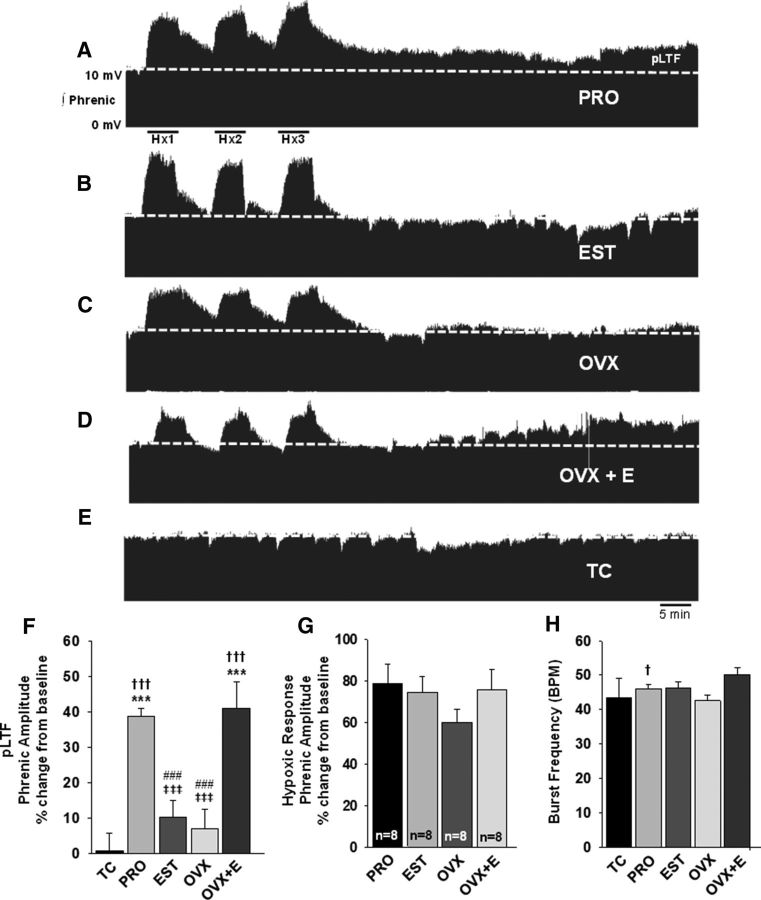Figure 1.
aIH induces pLTF in young proestrus, but not estrus rats, and systemic E2 restores pLTF to OVX rats. Representative traces of integrated phrenic neurograms over 90 min during and following aIH in young female rats. Baseline is indicated by the dashed line. All traces are identically scaled. A, Following exposure to aIH, females in proestrus (PRO; n = 8) exhibit a progressive increase in phrenic nerve burst amplitude above baseline (dashed line). B, Rats in estrus (EST; n = 8) do not express pLTF. C, OVX rats (n = 8) failed to express pLTF. D, E2 replacement (intraperitoneal) in OVX females (OVX+E; n = 8) rescued pLTF. E, In the absence of aIH, time-control (TC) rats (n = 5) displayed no time-dependent changes in phrenic nerve burst amplitudes over the same 90 min period. F, Quantification of pLTF magnitude in all treatment groups at 60 min following aIH, graphed as a percentage change from baseline. G, Phrenic nerve burst amplitudes in response to hypoxia, graphed as a percentage change from baseline. H, Phrenic nerve burst frequency in bursts per minutes (BPM) 60 min after aIH. †††p < 0.001, and †p < 0.05 versus baseline; ***p < 0.001 versus TC; ‡‡‡p ≤ 0.001 versus PRO; ###p ≤ 0.001 versus OVX+E.

